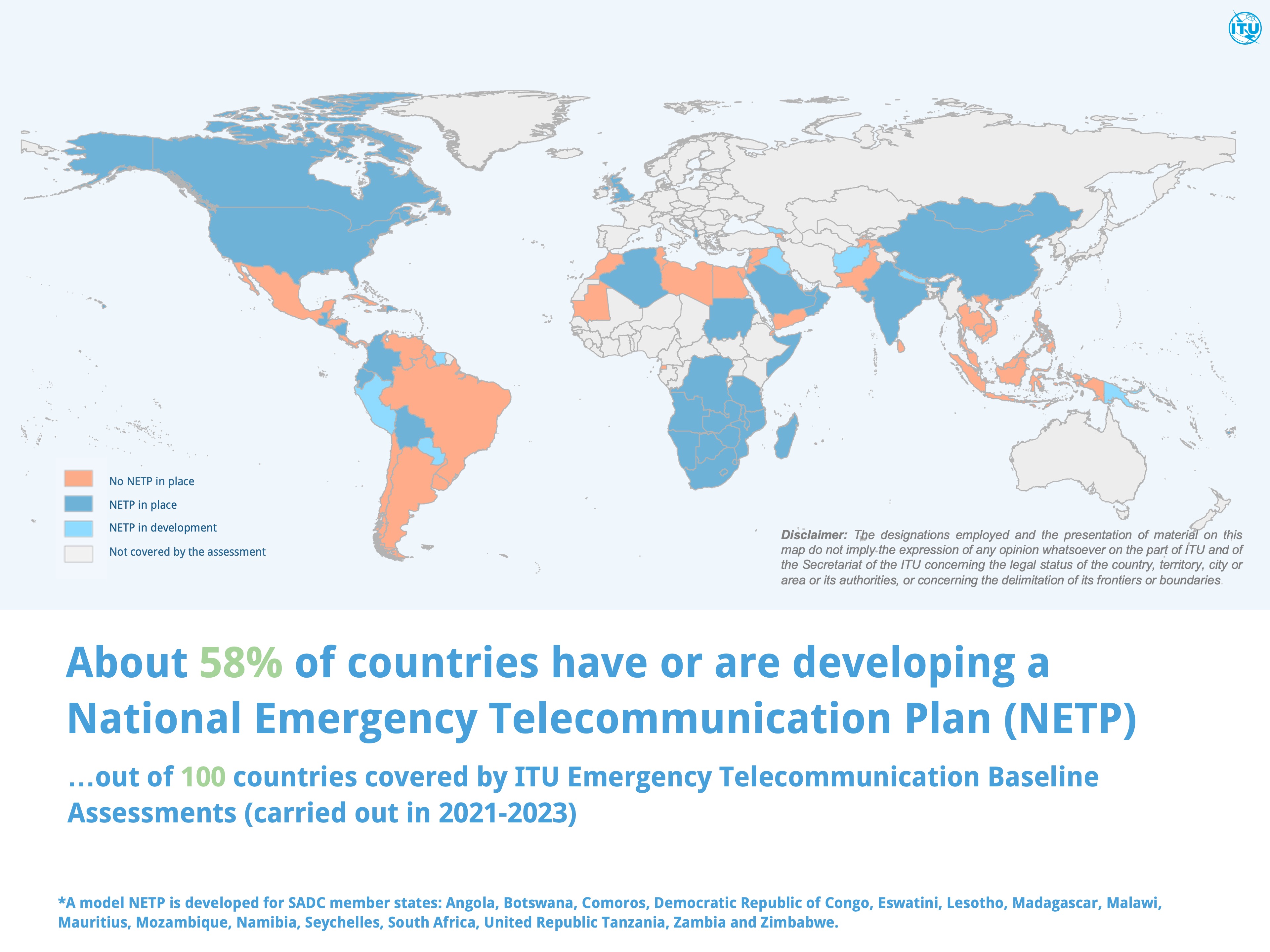Information and Communication Technologies are one of the major pillars for disaster management and risk reduction. They are essential to monitor the underlying hazards and to deliver vital information to all stakeholders, including the most vulnerable societies at risk. The flow of vital information in a timely manner before, during and after disasters is critical for decision-making processes, as well as for rapid response during emergencies.
What is a National Emergency Telecommunication Plan?
A National Emergency Telecommunication Plan (NETP) is an overall document that includes not only the regulatory framework for disaster risk management, but also all activities and actions that need to be developed and implemented in each of the phases of the disaster management cycle beyond the ICT sector. This includes the depiction of maps showing the location and types of hazards the country faces; understanding of the telecommunication/ICT landscape, operators and service providers, facilities availability and service penetration; the development of standard operating procedures and response and contingency plans; and the consideration of the treaties and international cooperation agreements signed by the country.
-
Read more
-
A National Emergency Telecommunication Plan promotes coordination across all levels of government, engaging stakeholders to think through the life cycle of a potential disaster, or any emergency, determining the required capacities and capabilities for emergency responses, and establishing a governance framework of roles and responsibilities through a multi-stakeholder approach.
The Plan also clarifies how to shape planning, to envision and share desired outcomes, and it outlines effective ways to achieve and communicate expected results. These procedures allow information sharing across all levels of government, within communities, and between public and private organizations to become more resilient to disasters.
How many countries have an NETP?

ITU's Strategic Target 3.5 stipulates that 'By 2023 all countries should have a National Emergency Telecommunication Plan as part of their national and local disaster risk reduction strategies'. An ITU assessment of 100 countries (covering mainly the Americas, Arab States and the Pacific Islands) shows that about 58% of these countries have or are developing an NETP.